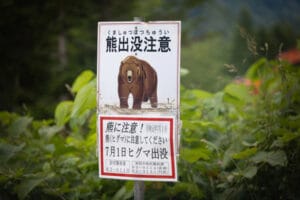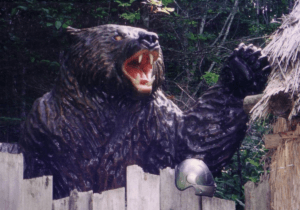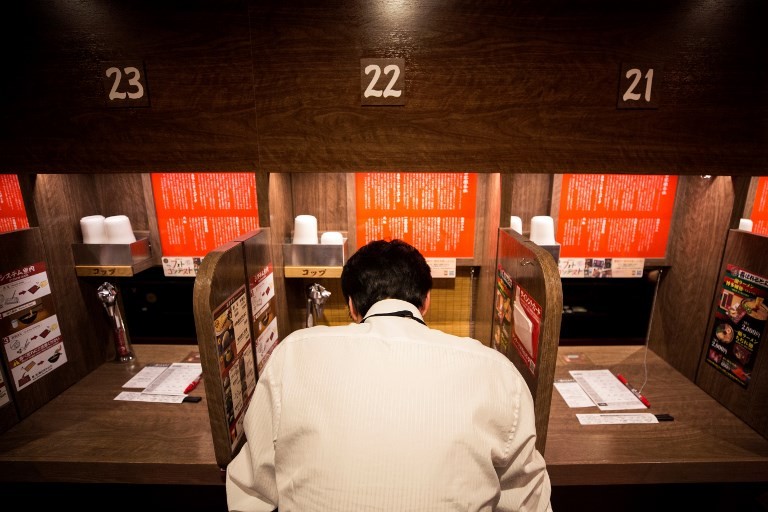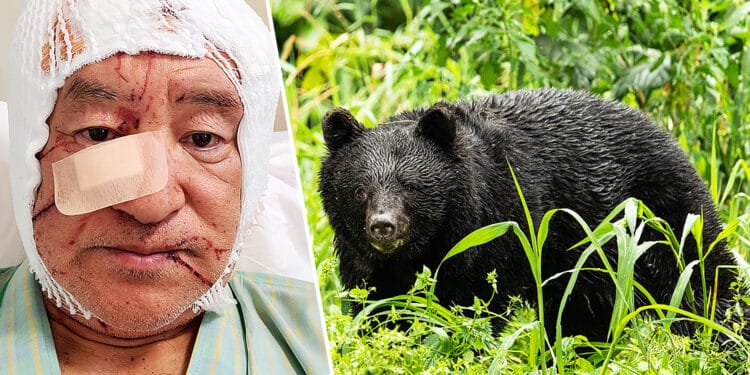Introduction: Rising Bear Attacks
Asian black bears in Japan’s Western Chugoku Mountains, a stretch covering Yamaguchi, Hiroshima, and Shimane prefectures, are at the center of a growing conflict between conservation and public safety. Listed as a “locally endangered species” by Japan’s Environment Ministry, hunting these bears has been officially banned in the region since 1994. However, recent increases in bear encounters have led to renewed calls from locals and authorities for policy revisions to address public concerns over safety and property damage.
Growing Bear Sightings and Attacks
Bear encounters have been on the rise in recent years. In 2023, Yamaguchi Prefecture recorded 444 bear sightings—a record number. Iwakuni and Shunan, cities in Yamaguchi’s northern regions, were hit hardest, with bears frequenting areas with fruit orchards, such as chestnut and persimmon trees. With bear activity increasing before hibernation each fall, residents like Kazumi Sayamoto have encountered bears in unexpected places, including private gardens, as bears search for food to sustain them over the winter. As acorn harvests in the area have dwindled, bears increasingly turn toward human settlements in search of sustenance.
This shift is due in part to changes in forest composition since the 1960s, when the Japanese government promoted planting cedar and cypress trees for building materials, diminishing the presence of acorn-bearing beech trees. These changes reduced the availability of natural food sources for bears, pushing them closer to human settlements and causing them to damage property, such as orchards and fruit trees.

Concerns Over Public Safety
In addition to property damage, the frequency of bear attacks on people has caused significant concern. In September 2023, a bear attacked an elderly man in Iwakuni, inflicting serious injuries. This attack, along with a previous incident in 2022, has heightened community fears. Efforts by residents to avoid such incidents include the use of deterrents, like playing loud radios outdoors, yet encounters continue to escalate.
Due to the spike in incidents, eight hunting clubs in Iwakuni submitted a petition to lift the bear-hunting ban, arguing that allowing controlled hunting could help reduce bear populations and restore safety to rural areas. Local authorities also feel trapped in a cycle: without bear control, residents are fearful to work on their land, which becomes overgrown and further attracts bears.
Balancing Conservation and Public Safety in Bear Management
Japan’s ban on hunting Asian black bears, originally established to aid conservation, has been instrumental in boosting bear populations in the Chugoku region. By 2020, the number of bears had grown from around 480 in 1999 to approximately 1,300. To address the need for both conservation and public safety, Yamaguchi, Hiroshima, and Shimane prefectures revised their approach in 2022 to one of “conservation and control,” permitting limited culling of bears that pose immediate risks to human safety.
Both black and brown bears are now part of Japan’s wildlife management programs, making them eligible for government funding to help prevent dangerous human-bear encounters. In 2023, Yamaguchi Prefecture allocated ¥4.4 million to bear management initiatives, including efforts to limit bear attractions in residential areas. For example, the program funds the removal of neglected fruit trees, which often draw bears closer to populated areas, thereby minimizing human-bear conflicts.

The Path Forward
The escalation in bear attacks has highlighted the delicate balance between conservation and public safety. Local communities and conservationists must collaborate to manage this issue without endangering the bear population. The shift to a “conservation and control” strategy represents a step toward more adaptive management practices, potentially allowing bears to thrive in controlled numbers while keeping residents safe.
As Japan’s environment continues to evolve, bear management in Western Chugoku will require a balance of ecological conservation and proactive safety measures. Residents hope that, with the support of both local and national efforts, bear attacks can be reduced without reversing years of conservation progress.
























